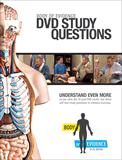
The Motors That Move Us
Science News
From head to heels, your body teems with minuscule machines driving your everyday physical processes.
Cilia (Latin for “eyelash”) project from your cells like little hairs. There are two types of cilia—motile and primary. Motile cilia are the mini motors behind a cell’s mobility. Made of proteins that power their propulsion, cilia move in a synchronized, back-and-forth beating pattern that can either push the cell or drive fluids past the cell like paddling a boat.
Primary cilia lack motility, instead acting as antenna on cells throughout the body, sensing stimuli like smell, light, and sound. They also detect chemicals and send signals to the rest of the cell.
With a range of duties like transportation and sensory reception, these ingenious engines were created by a brilliant Engineer to keep every inch of our bodies working properly.
Brain
On brain cells, cilia control the flow of spinal fluid to nourish and protect the brain and support neuron formation and maturation. Scientists believe that cilia in the brain may also be involved in sensing feelings like hunger in the body.
Eyes
On photoreceptors in your eyes, cilia convert light into electrical signals that are delivered to the brain. The brain turns those signals into the images we see.
Ears
Our sense of hearing depends on the cilia in our ears. They sense sound vibrations and convert them to electrical signals that are sent to the brain.
Nose
Cilia in the nose have two important jobs: transporting particles trapped in mucus out of the nasal cavity and sending signals to the olfactory bulb. The olfactory bulb translates those signals into smells.
Spinal Cord
In the spinal cord, ciliated cells circulate fluid during early development, aiding in straightening the body axis and controlling spine development.
Respiratory Tract
Cilia line our airways, moving a layer of liquid mucus that traps harmful irritants like dust and microbes so they don’t reach our lungs.
Muscles
Cilia on our muscles’ stem cells convert signals from other parts of the body to enable cell regeneration. Lost or damaged cilia impair muscle reconstruction and strength recovery.
Heart
In developing hearts, ciliated cells aid in the development of this important organ.
Kidneys
Cilia maintains the kidneys’ health by monitoring urine flow through these essential organs. Though researchers continue studying the connections, they believe that misfunctioning cilia lead to kidney failure.
Reproductive Organs
Cilia ferry an egg through a female’s fallopian tube every month. Meanwhile, millions of male sperm swim toward the egg via a different type of motility structure called a flagellum. Cilia lining the walls of the male reproductive system assist flagella in moving the sperm.
Answers Magazine
April–June 2023
Gap theorists insert millions of years between the first two verses of Genesis. But what really lurks in that gap?
Browse Issue SubscribeRecommended Resources

Answers in Genesis is an apologetics ministry, dedicated to helping Christians defend their faith and proclaim the good news of Jesus Christ.
- Customer Service 800.778.3390
- © 2024 Answers in Genesis






